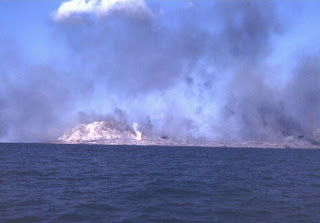After his successful Academy Awards wins for Unforgiven and Million Dollar Baby, Eastwood returned to directing in 2006 for the back-to-back features Flags of our Fathers and Letters of Iwo Jima. Eastwood’s biggest influence on the two features was John Huston’s The Battle of San Piertro, detailing an account of the battle’s gritty realism as well as Lewis Milestone’s All Quiet on the Western Front, a German perspective on World War I. As a young solider in Fort Ord, Eastwood screened John Huston’s Documentary many times as a projectionist. This was a film that had a lasting affect on Eastwood's future work referring to the realities of war and the internal battles that soldiers are faced with. The World War II films showed how Eastwood became the influence of his own filmmaker as Flags of Our Fathers details the horrific sacrifice that was part of a victory in a ‘just war’, whereas the Letters from Iwo Jima describes a tragic story of defeat and the devastation to a society.
For Flags of our Father, Eastwood introduced us to three main characters and examines the personal toll on the survivors rather than setting the audience in the heart of the action. John ''Doc'' Bradley, doesn’t believe in taking full credit for the battle because of one picture, Rene Gagnon, who is willing to prove he is a hero, even though he tries not to get in a real battle and Ira Hayes, a Native American who at the same time made into a war hero is also a target due to his race. The film revolves around the famous picture, as well as how these three men live their lives after the war, with Hayes never feeling comfortable in claiming status as a hero for his involvement, Bradley is haunted by memories of war and his friends who past away and Gagnon celebrating with all the media attention. In Letters of Iwo Jima, Eastwood identifies us to Saigo who doesn't believe in sacrificing himself in battle only wanting to be with his family, whereas General Kuribayashi, again, torn between doing us duties and being with his family, although he feels the need to die for a cause and with dignity, but sees the humanity in the American soldiers.
"They get to know these people, and what they went through, as well as perhaps give the audience a feeling of what it was like in that time, what these people dedicated or donated their lives for” (8)
For Eastwood, his themes are clear: the brutality of war, heroism and the humanities of our enemies. In terms of themes for Flags of our Fathers, Eastwood examines the psyche of the warfare itself. With earlier films such as Unforgiven and The Outlaw Josey Wales, Eastwood portrays an assessment and analysis of heroism and what it means for both those who are labeled heroes and those who did the labeling. This character development is something Eastwood relates to as an actor using his experiences from both Will Munny and Josey Wales to John Bradley as these men are pushed into battle trying to deal with losing close friends as well as fighting for something they believe in. As for Letters from Iwo Jima, Eastwood become’s more fascinated with the Japanese understanding of heroism. For the Japanese soldiers, they have glory and honour and accepting their clear and present defeat with humbleness, but going back to normal life becomes a struggle, for example: Saigo again stands out as someone who represents the values of life than believing in a code of honour in the backdrop of an impending suicidal battle. In contrast, more disturbingly, are scenes when some soldiers embody the phrase "death before dishonour" as some would rather die than get captured and disgrace their Army and Land.
The truest form of classical filmmaking is understanding and interpreting characters as well as physical space. Eastwood cleverly relates his epic war films by constructing a series of approaches to the subject, the concluding event and then building away from it. Given the way physical space is so often filled in depth and meaning through Eastwood style of darkness – the way Eastwood has been influenced from his previous films over the years is the dark toned photography called from all his cinematographers over the years from Bruce Surtees through to Jack Green and now Tom Stern – this without doubt creates a sense of a remoteness and a dying desperation, especially in Letters of Iwo Jima through the isolated locations.
For Eastwood, the war films were his most extensive visual effects pieces he has ever made. Using the desaturated look with the deep-black imagery of Iwo Jima, made the look of these films almost photographic like looking at war images of the battle at Iwo Jima. The surviving photographs from Bob Campbell and Howard W. Whalen were used and heavily influenced in the scenes for the arrival and attacks on Iwo Jima beach. These photos were taken at Iwo Jima February 19th and 20th 1945.Clip 14
Still Image 1
Still Image 2
Still Image 3
Still Image 4
Eastwood filmed the complex special effects rarely using blue or green screen relying heavily on natural lighting. With filming taking place mostly on the black, sandy beaches, in caves and at night, Letters of Iwo Jima has a far more desaturated look adding a sense of despair and isolation. Only blood, fire, explosions and American / Japanese Flags were in colour giving it clearer clarity with Eastwood intentionally manipulating it to stand out in the darkness.
Clip 15
Eastwood brings it back full circle relating to his experiences working with Leone on shooting at location. sShot on 35mm, but experimented with HDV Camera systems in certain action sequences giving a digitized theoretical point of view, for example: The attack of Mount Surbachi.
Clip 16
Still Image 5
Still Image 6






No comments:
Post a Comment